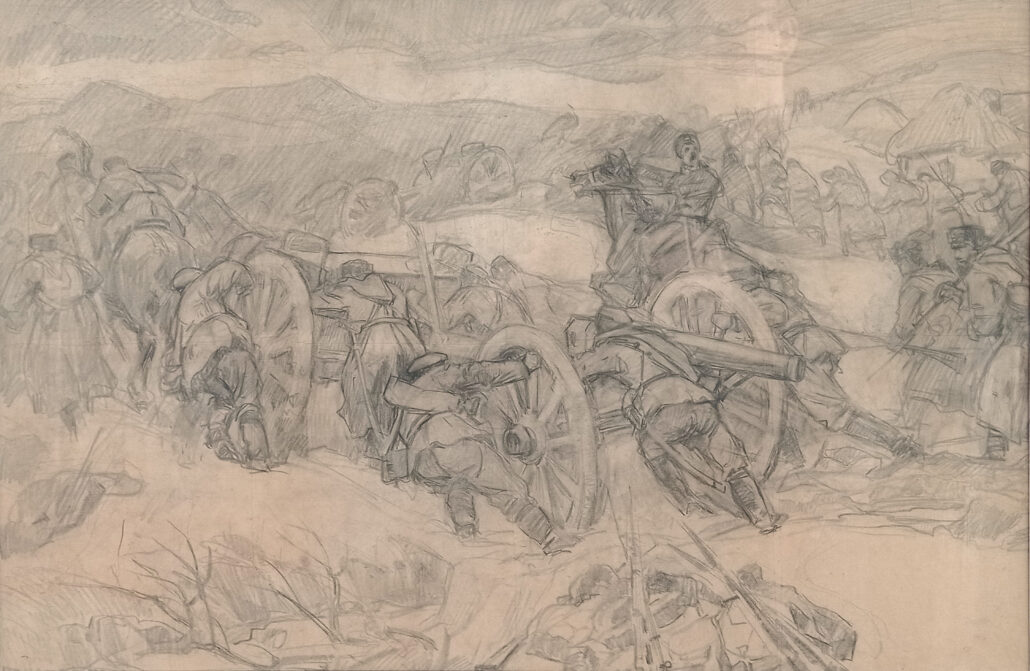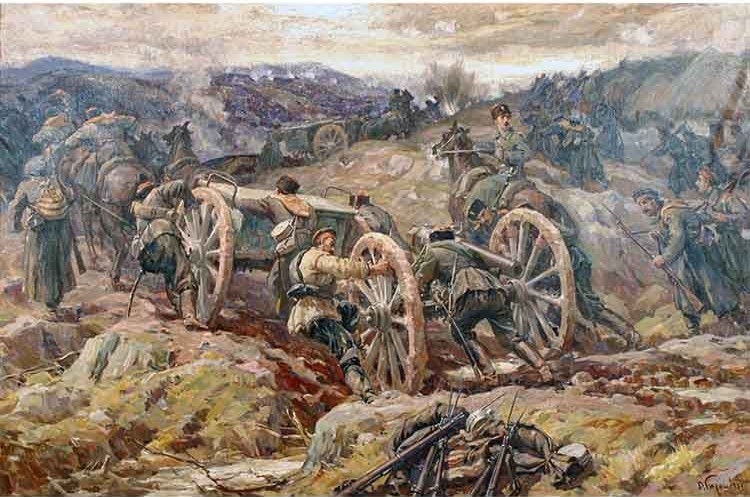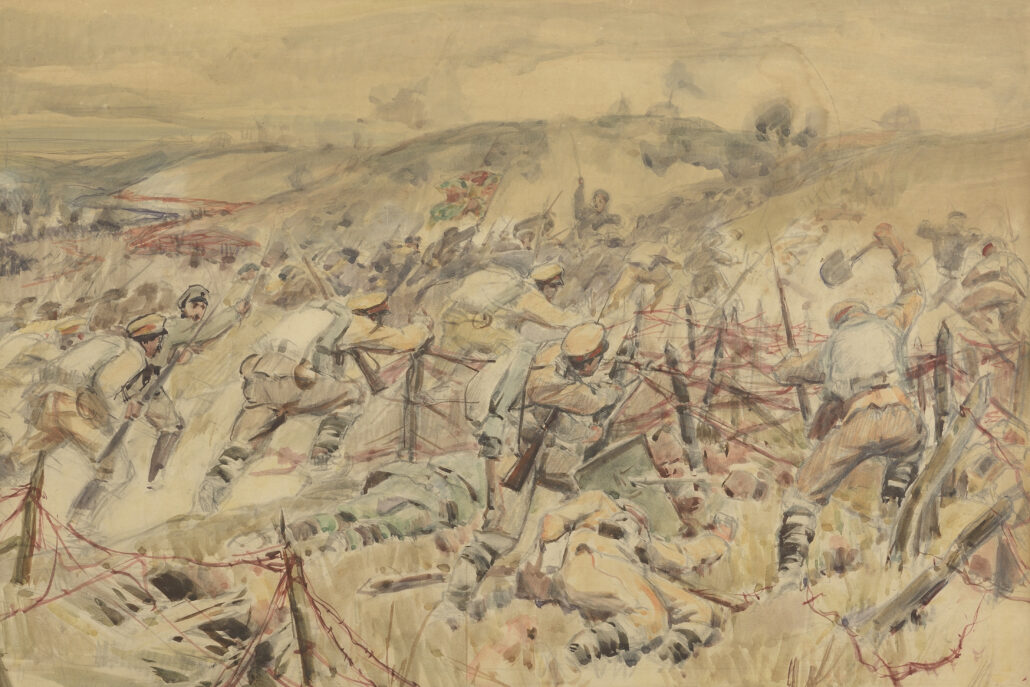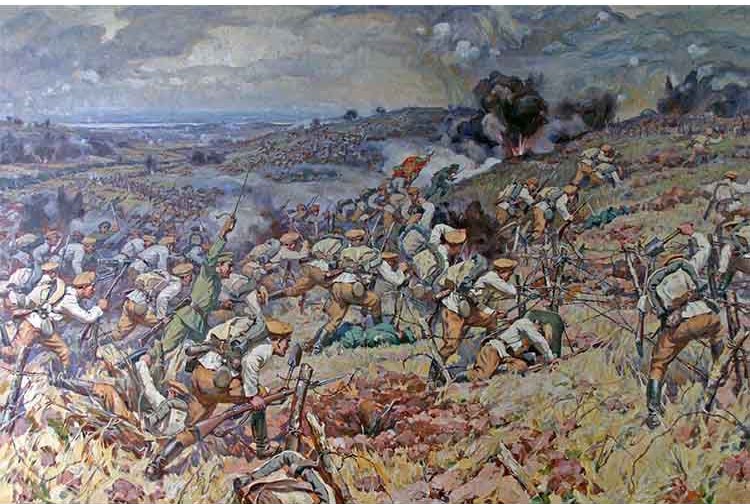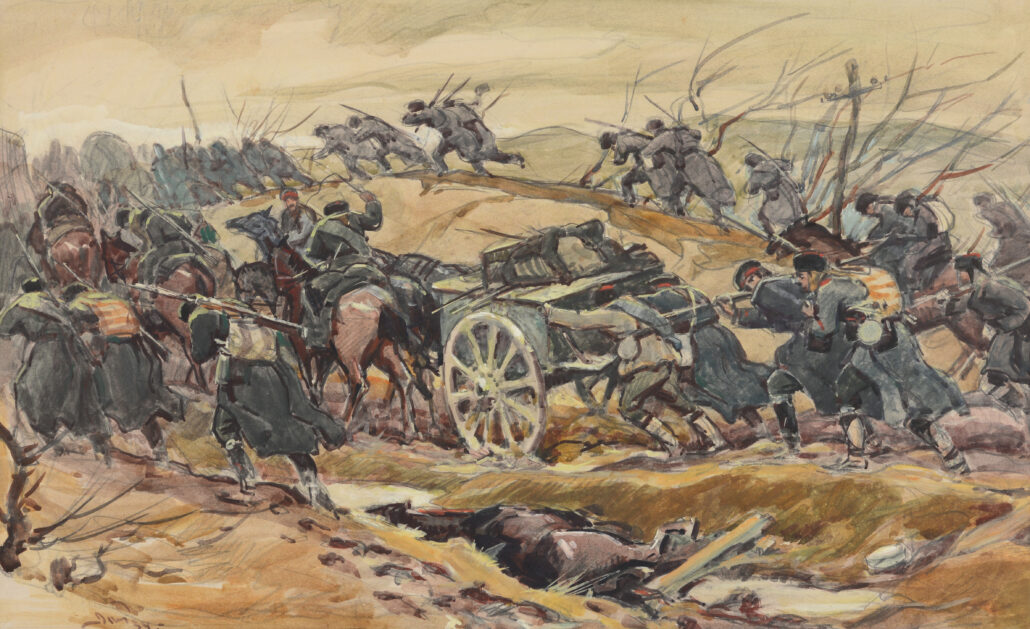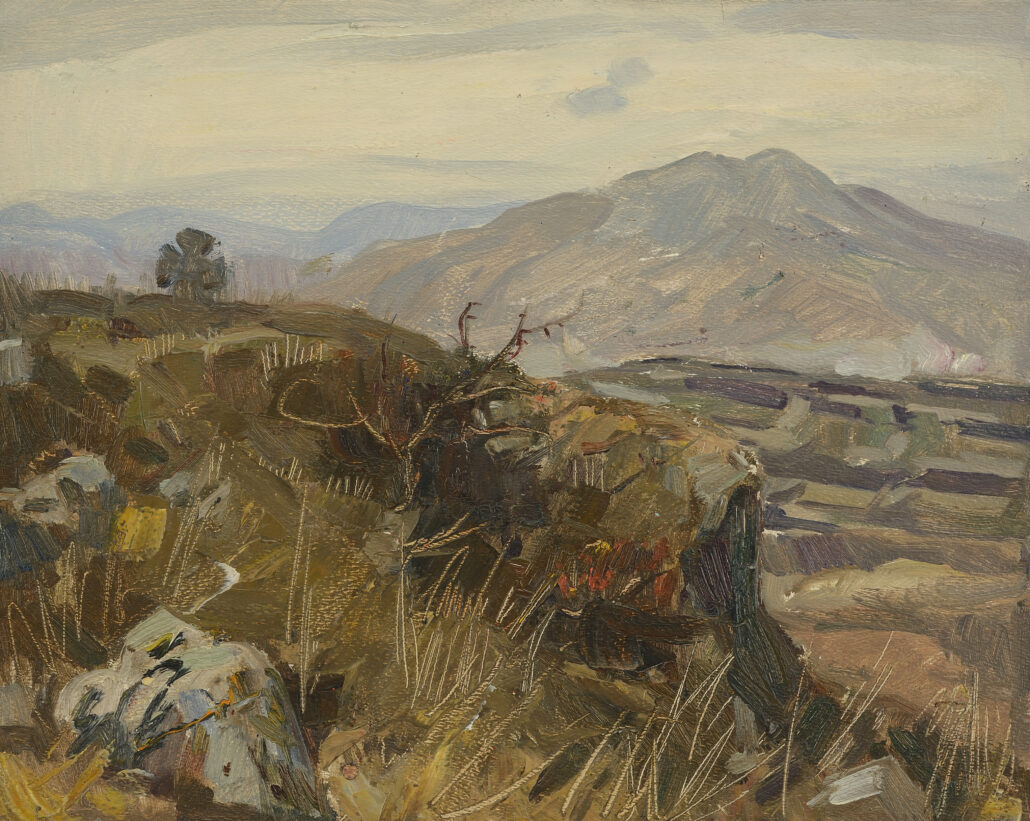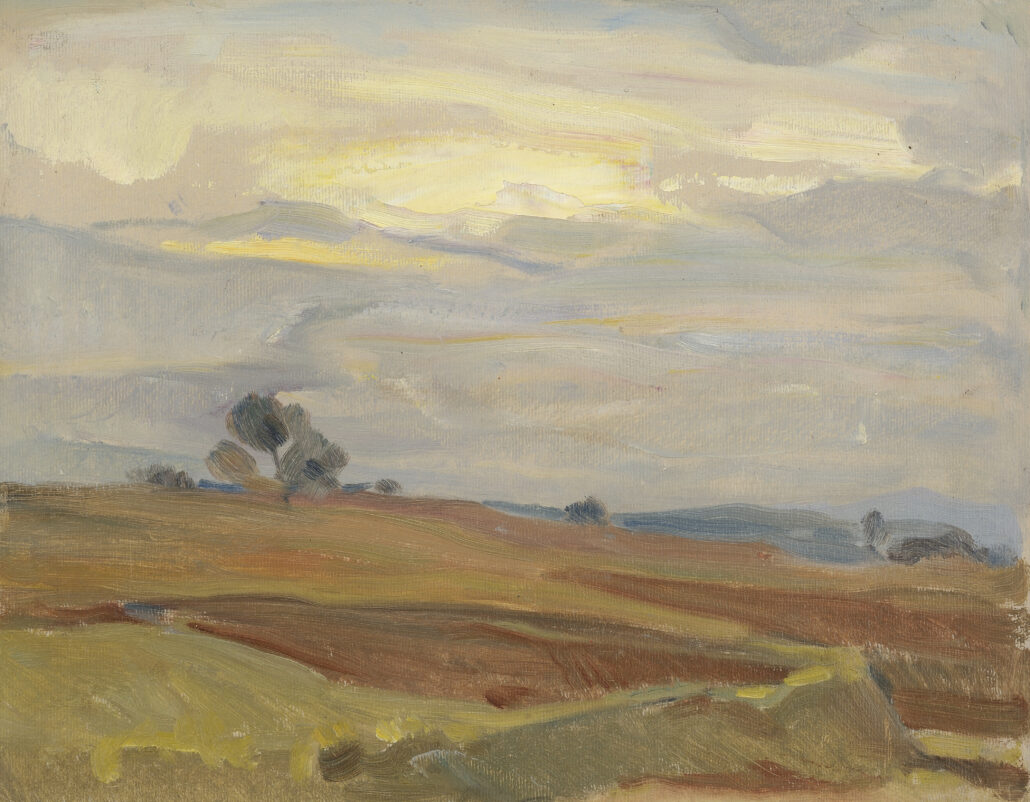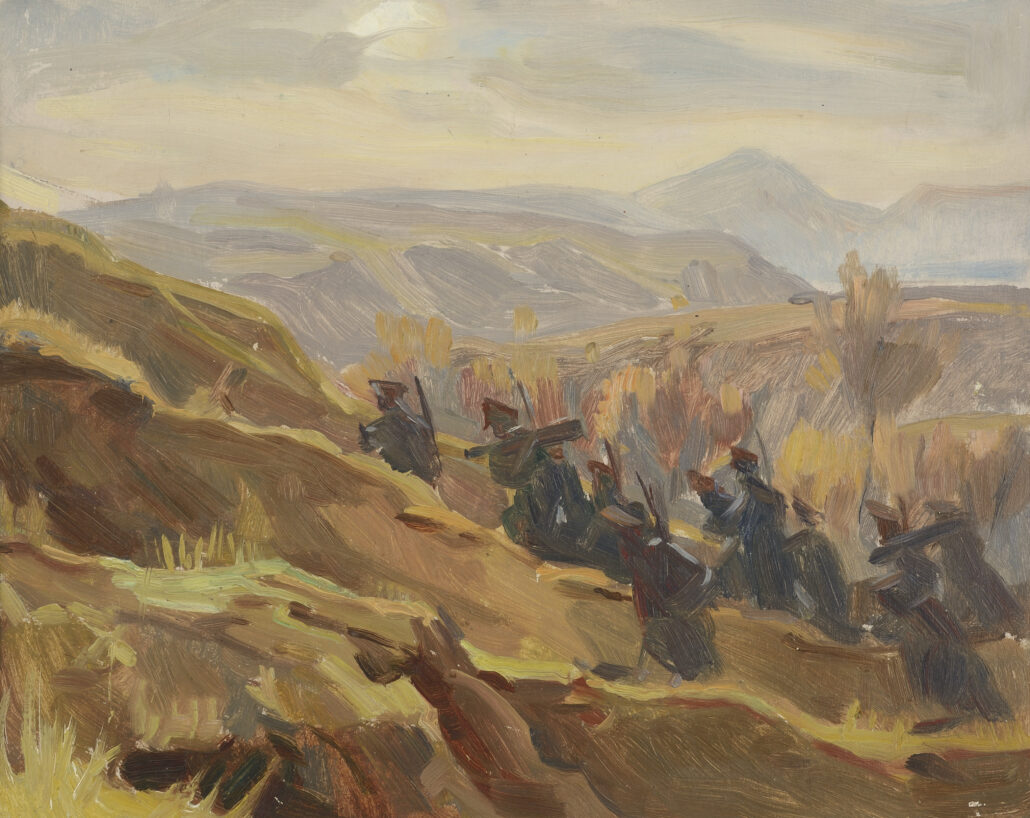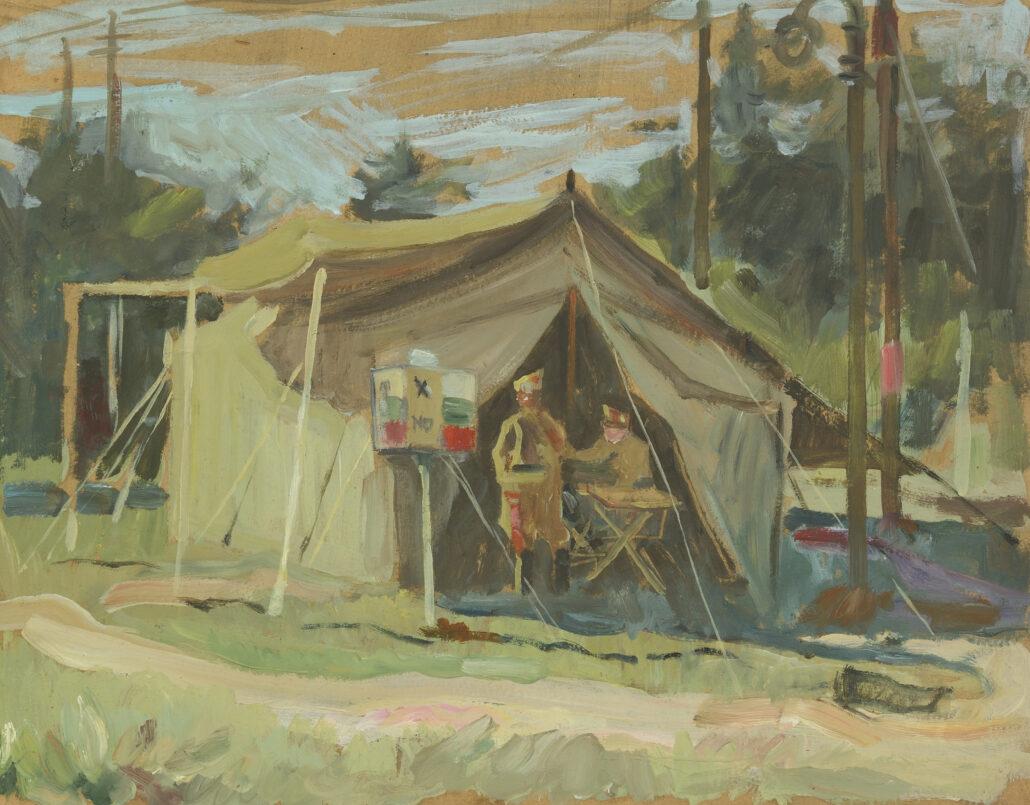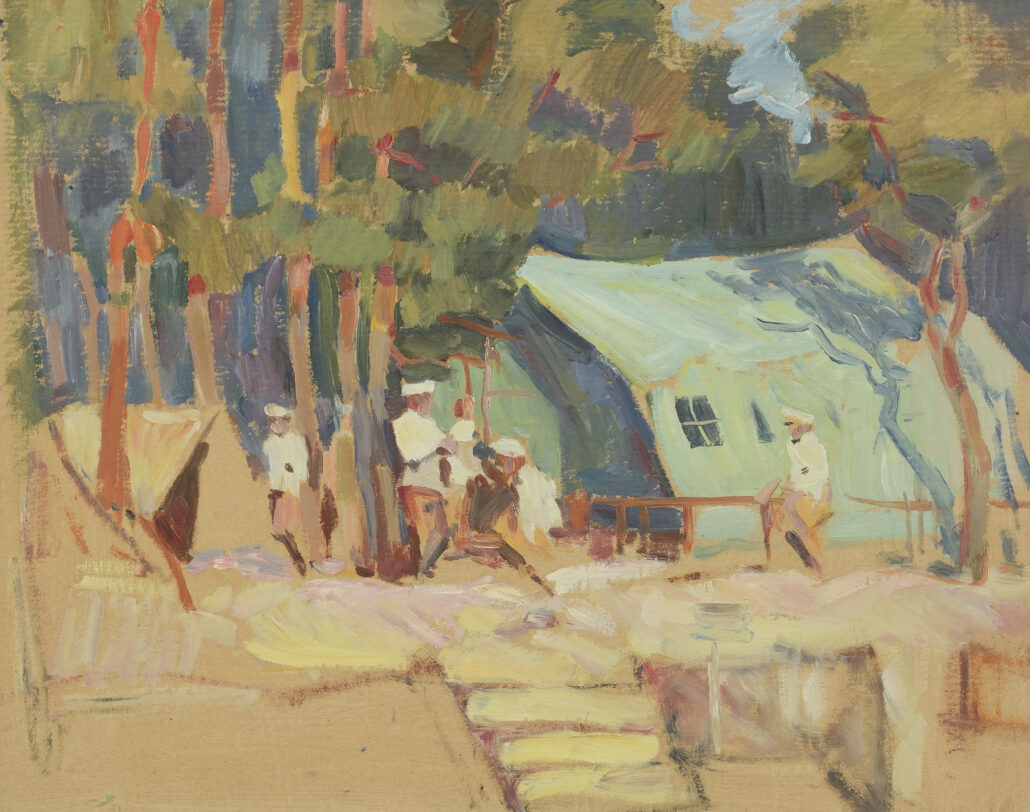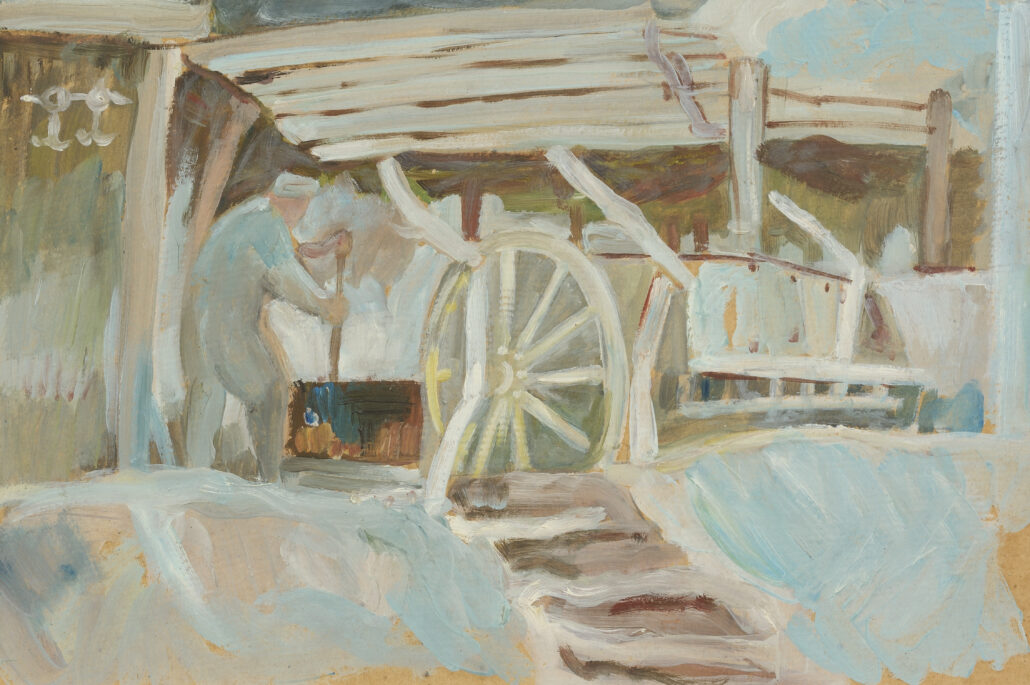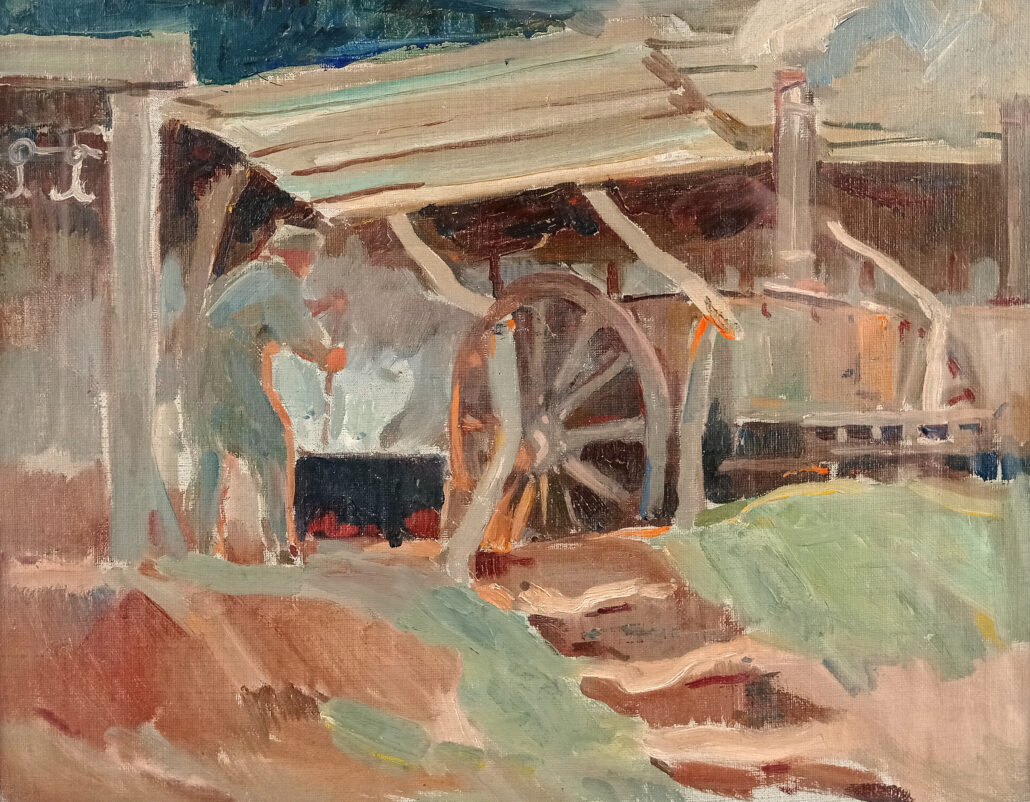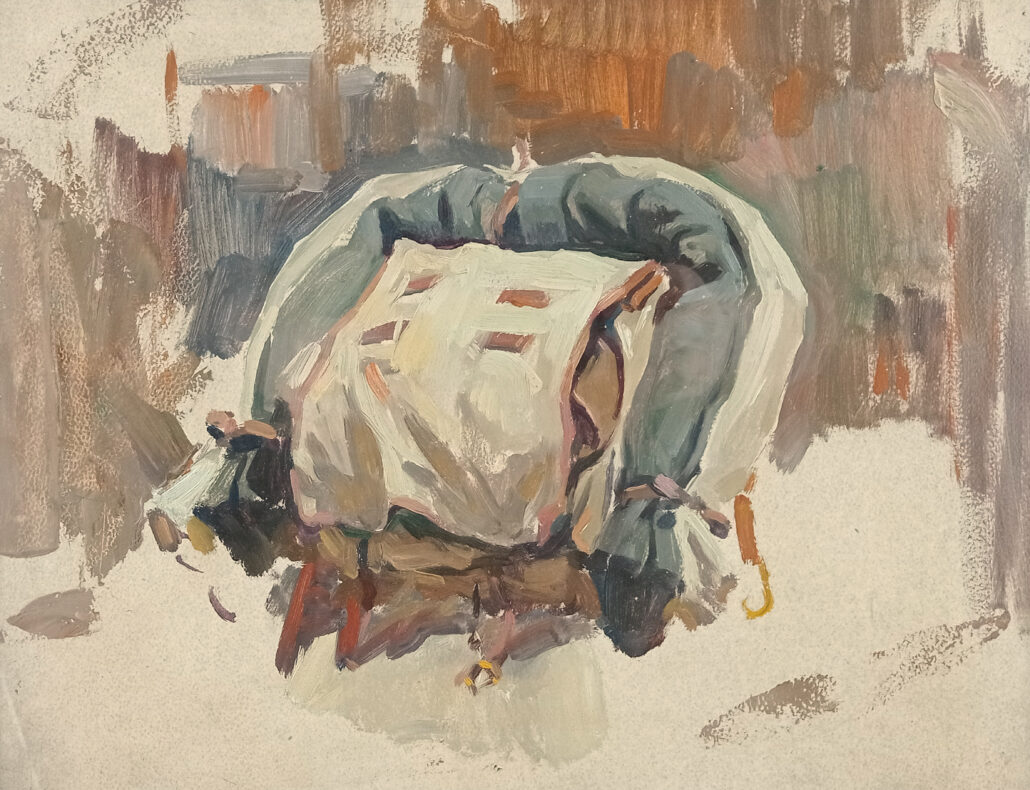For the Christmas auction of Enacor Auction House in 2023, we have found and offer to the connoisseurs of battle painting a dozen works by the great master Dimitar Gyudzhenov. His artworks on this subject are less known, rarely exhibited and even more rarely offered on the art market. Moreover, they are no less valuable than his widely known paintings on historical subjects. For some experts, Gyudzhenov’s war paintings are even more valuable.
Two preparatory drawings for large oil paintings
One particularly valuable work is a pencil drawing. It is a preparatory drawing, with an almost identical composition, landscape, figures, attributes, objects and details, to Gyudzhenov’s famous 1937 oil on canvas, “Artillery Withdrawal to Gourgoulyat”, with a WWI battle scene. The painting, for which the drawing is preparatory, belongs to the Fine Arts Collection of the National Museum of Military History in Sofia and is on display in its permanent exhibition (Collections 1, Link).
In the center of the composition, there is a depiction of two two-wheeled carriages, one with a box of ammunition and the second with cannon. The uneven terrain and especially the stream they have to cross make movement extremely difficult. A team of horses pulls the chest of ammunition and a team of soldiers pulls the cannon. Several soldiers push the two-wheeled cart from behind. An officer on horseback moves behind them, and other cannons and an infantry unit can be seen in column in the background. A pile of packs and rifles is present in the foreground – the soldiers helping to move the cannons have left it on the ground. Gyudzhenov masterfully conveyed the tension in the bodies of the soldiers, in the head and neck of the officer’s horse, and the anxiety drawn on the face of the mounted officer, who is simultaneously keeping an eye on both the difficulty of moving the artillery and the column of infantrymen following him.
The second very valuable work with a multi-figure composition is one of the watercolours at the auction. It depicts a scene with numerous soldiers and officers in full battle gear, presented in the highly dynamic moment of an attack. The officers lead their units with swords raised high. The soldiers run, bayonets erect on their rifles, covering the attackers with gunfire or tearing down wire enclosures with their soldiers’ shovels. A dead soldier of the enemy army, in a different (green) uniform, is depicted in the foreground. In this watercolour, we can observe the extraordinary skill of the drawer Gyudzhenov – to represent with just a few hand movements the complex poses in this very dynamic scene, and to convey very expressively the tension of the soldiers’ bodies at the moment of attack. In the distant plans, we observe Gyudzhenov’s artistry in complex landscapes and perspective.
With some changes in the composition of the soldiers’ figures, this watercolour served as the basis for a second, very famous oil canvas from the collection of the National Museum of Military History in Sofia – “The Battle of Toutrakan”, which took place in 1916 and was painted in 1938 (Collections 2, Link). The landscape is much the same, with the view in the oil on canvas shifted slightly to the left. More detail has been added to the second and third plan, in which there are numerous combat units. The landscape in depth has been developed in great detail. Numerous exploding shells have been added in the distance of the oil canvas, which are missing from the primary watercolour, probably worked on the front.
Several of the watercolour scenes are used in the foreground scenes of the oil on canvas. From right to left: the soldier tearing down barbed wire fences with a shovel; the pair of crouching and kneeling soldiers covering their attacking brothers with gunfire; the officers leading their units with high raised sabers; the flag bearer in the background. The fallen enemy is moved to the secondary plan, and a huge shell crater is placed in the foreground.
In the battle scenes of attack or advance, Gyudzhenov emphasizes not only the heroism of the soldiers and officers, but also the burden of military service and suffering for the individual soldier. Moreover, not only for the men, but also for the horses, which participate equally with the soldiers in the battles and movements. Moreover, one could also say the opposite – the fighters also harness, pull and push the artillery to help the horses. Very often, it is not heroism that is foregrounded in Gyudzhenov’s battle scenes (heroism is usually in the second and third background), but destruction and death – and not only of soldiers, but of animals as well. In one of the watercolours offered in the auction, which is again on the theme of moving artillery, a fallen, agonising horse is represented in the foreground. Clearly, the artist was not indifferent to the suffering and plight of the animals who participated en masse in the wars of the first decades of the 20th century.
A look behind the scenes of the combat
In the works of Dimitar Gyudzhenov offered at the Christmas auction, we also meet another insight of the artist, almost unknown until now – a look behind the scenes of the combat operations. It is a more intimate, more personal, more human view of war – the view of the ordinary soldier. It is represented in oil etudes and sketches.
The soldier Gyudzhenov enjoys gorgeous or plain landscapes.
He peers from afar into the darkness of the officers’ tent, or slows down by their briefing table in the sun to overhear what they are planning.
As if starving early, or perhaps as an admirer of the delicious food he misses, he sits for hours in the field kitchen and paints two whole etudes (at daylight and dusk) with the army cook looming over the cauldron with the dinner.
The soldier’s backpack is sketched with the same love with which a native home or room is painted – everything personal is gathered there, all the soldier’s possessions that provide and save his life at the front. It has been drawn as carefully as it had been carefully arranged, tightly packed, and placed in the proper, sunlit spot. It resembles a window of the father’s house, which the soldier does not know if he will see again.
Connoisseurs of war painting and of Dimitar Gyudzhenov will have the rare opportunity to acquire battle scenes as well as etudes and sketches on themes of soldier’s life behind the battle scenes during the First World War, in which Gyudzhenov participated as a young military artist and as a regular soldier. Unlike his paintings on historical subjects, these works were created in freedom from ideological and patriotic requirements and represent the artist’s free individual view and personal experiences on the battlefield. The affordable starting prices of his paintings in the auction will allow more connoisseurs to own and experience together with Gyudzhenov the unexpectedly actual themes of war, world wars, the destiny of man and civilization that have become relevant today.
Rositsa Gicheva-Meimari, PhD,
Senior Assistant Professor at the Section of “Art History and History of Culture” and member of the “Bulgarian-European Cultural Dialogues” Center at New Bulgarian University
Bibliography
Avramov 2016. Avramov, Dimitar. Gudjenov – forgotten and unknown. In: Portal for Culture, Art and Society, ed. “Stefan Dobrev, published on 07.07.2016. – Аврамов 2016: Аврамов, Димитър. Гюдженов – забравен и непознат. В: Портал за култура, изкуство и общество, изд. „Стефан Добрев“, публикувано на 07.07.2016. Link . Visited 15.10.2023.
Kolev 2021: Kolev, Yoan, 2021. Dimitar Gyudzhenov – the painter who chronicled Bulgarian national memory. Bulgarian National Radio, 2021. – Колев 2021: Колев, Йоан, 2021. Димитър Гюдженов – художникът летописец на националната ни памет. В: Българско национално радио, 2021. Link. Visited 18.10.2023.
Collections 1: Collections of the National Museum of Military History in Sofia. – Колекции 1: Колекции на Национален военноисторически музей в София „Изтегляне на артилерия към Гургулят“ – Link. Visited at 26.11.2023.
Collections 2: Collections of the National Museum of Military History in Sofia. –Колекции 2: Колекции на Национален военноисторически музей в София. „Боят при Тутракан“ – Link. Visited at 26.11.2023.
Marinska 1996: Marinska, Ruzha. The 20s in Bulgarian Art. Sofia, 1996. – Маринска 1996: Маринска, Ружа. 20-те години в българското изобразително изкуство. Фондация “Отворено общество”, София, 1996.
Petrova 2021: Petrova, Zornitsa, 2021. An Artist and the War. In: MOVE.BG, published 15 October 2021 – Петрова 2021: Петрова, Зорница, 2021.Един художник и войната. В: MOVE.BG, публикувано на 15 октомври 2021. Link. Visited 15.10.2023.

